31. Yuanye Liu, Lee W. Casperson, and Tsing-Hua Her, “Transverse mode competition in index-antiguided waveguide lasers,” Applied Physics Letters 107, 241111 (2015).
Transverse mode competition in large-mode-area index-antiguided planar waveguide lasers is investigated. We show that, with very large core width and/or index difference between the core and cladding, high-order modes can oscillate and contribute to output lasing power. We have developed a theoretical model for transverse mode competition that takes into account transverse spatial hole burning. Experiments conducted on IAG waveguide lasers with core width of 220 μm and 400 μm are compared to theory with good agreement.
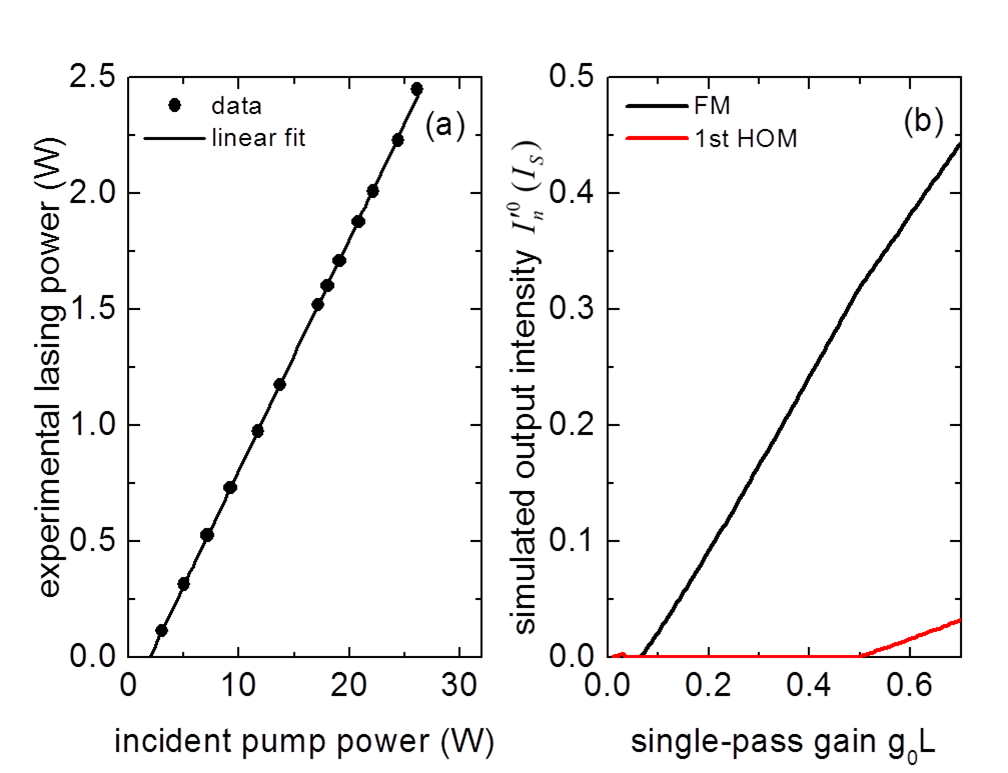 |
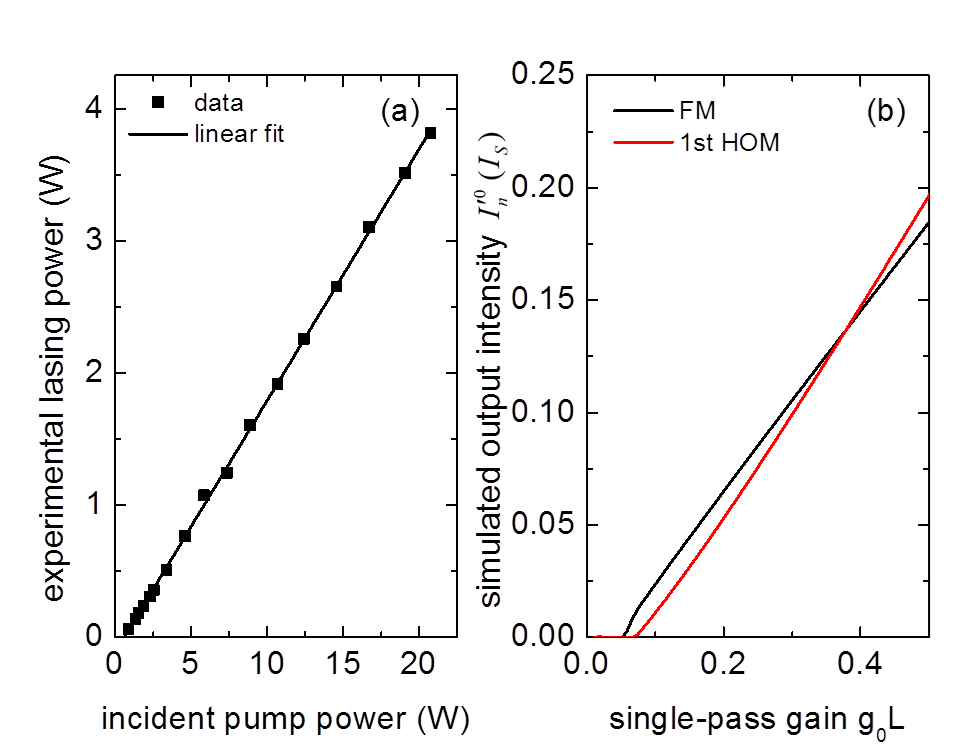 |
30. H. Y. Yao, J. Y. Jiang, Y. S. Cheng, Z. Y. Chen, T. H. Her, and T. H. Chang, Modal analysis and efficient coupling of TE01 mode in small-core THz Bragg fibers, Opt. Express 23(21), 27266-27281 (2015)
We report a design of low-loss THz Bragg fibers with a core size on the order of wavelength that operates near the cutoff frequency of its TE01 mode. We also propose a broadband Y-type mode converter based on branched rectangular metallic waveguides to facilitate coupling between the TE01 mode of the Bragg fiber and the TEM mode in free space with 60% efficiency. Our fiber holds strong promise to facilitate beam-wave interaction in gyrotron for high-power THz generation.
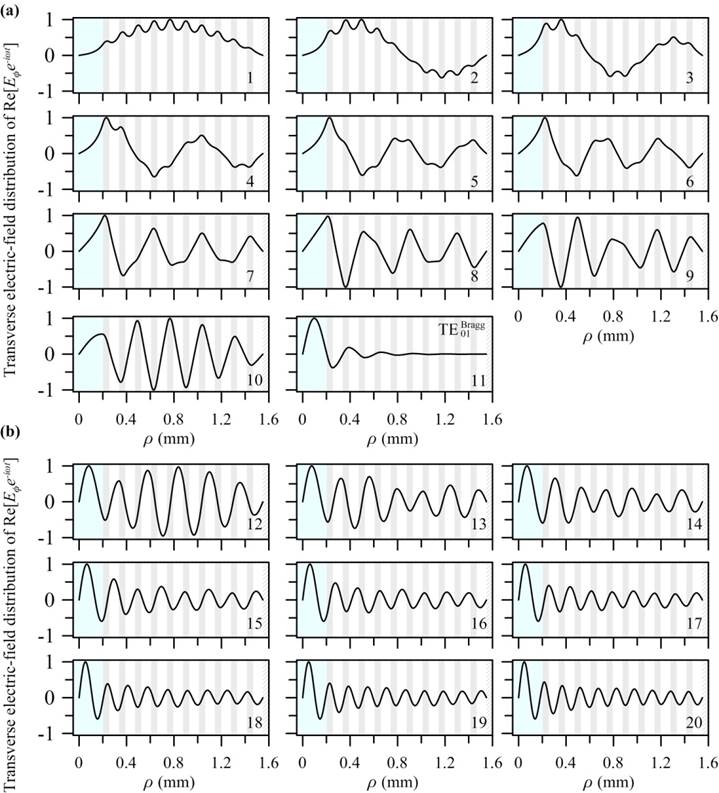 |
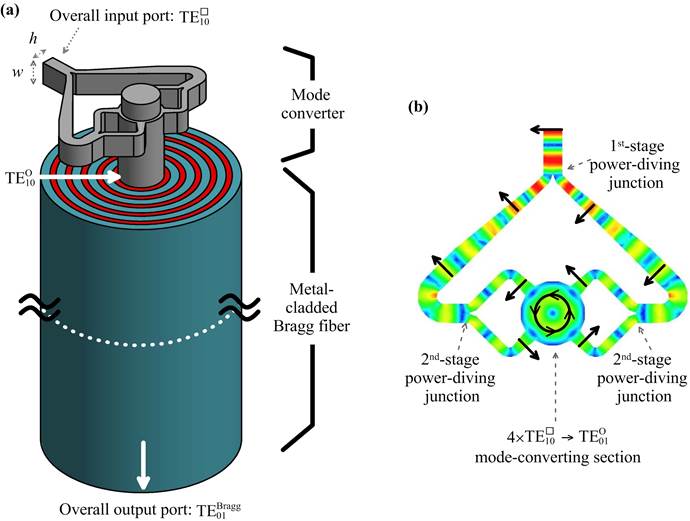 |
29. Chan-Shan Yang, Chih-Hsuan Lin, Alexey Zaytsev, Kuei-Chung Teng, Tsing-Hua Her, and Ci-Ling Pan, “Femtosecond laser ablation of polymethylmethacrylate via dual-color synthesized waveform,” App. Phys. Lett. 106 (5), 051902 (2015)
We have demonstrated the laser ablation of PMMA using dual-color waveform synthesis of the fundamental (ω) and its second-harmonic (2ω) of a femtosecond Ti:Sapphire laser. A modest and yet clear modulation (~22%) in ablated area versus relative phase between the 2ω and ω beams with a power-ratio of 15% (28/183 mW) is revealed. This is explained qualitatively by the dependence of ablation on multiphoton ionization of which the rate is related to the relative phase of the synthesized waveform. At higher peak power ratios, the modulation decreases rapidly, as the two-photon-ionization rate of the 2ω dominates over that of the three- to four- photon ionization of the ω beam. This technique demonstrates the feasibility of phase-controlled laser processing of materials.
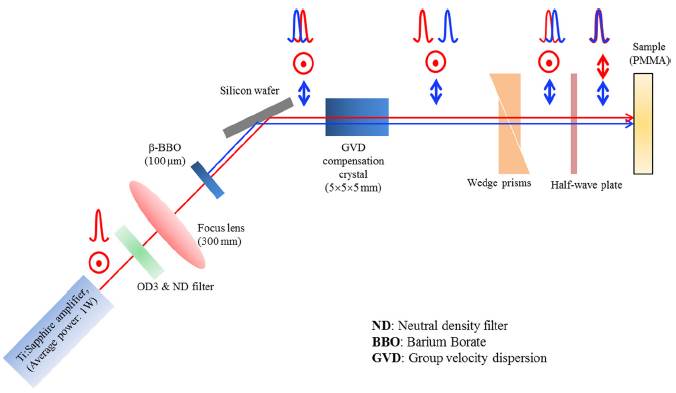 |
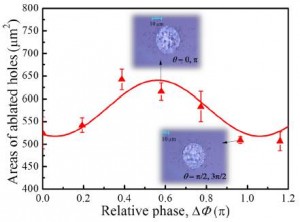 |
28. Lee W. Casperson and Tsing-Hua Her, “Thermal refraction defocusing in very-large-core step-index antiguided fiber lasers,” Journal of the Optical Society of America B 31(11), pp.2858-2863 (2014).
Thermal refraction defocusing in very-large-core step-index antiguided fibers is investigated theoretically. Recent analytical methods based on a zero-field approximation for studying the effects of thermal focusing are extended and applied to the defocusing effects that occur in laser media with negative temperature coefficient of refractive index. Intermediate values of thermal defocusing tend to flatten the radial intensity distribution, while strong thermal defocusing is shown to concentrate the intensity near the antiguiding core-cladding boundary. The same analysis is also applicable for very-large-core graded-index fibers with a divergent parabolic index profile.
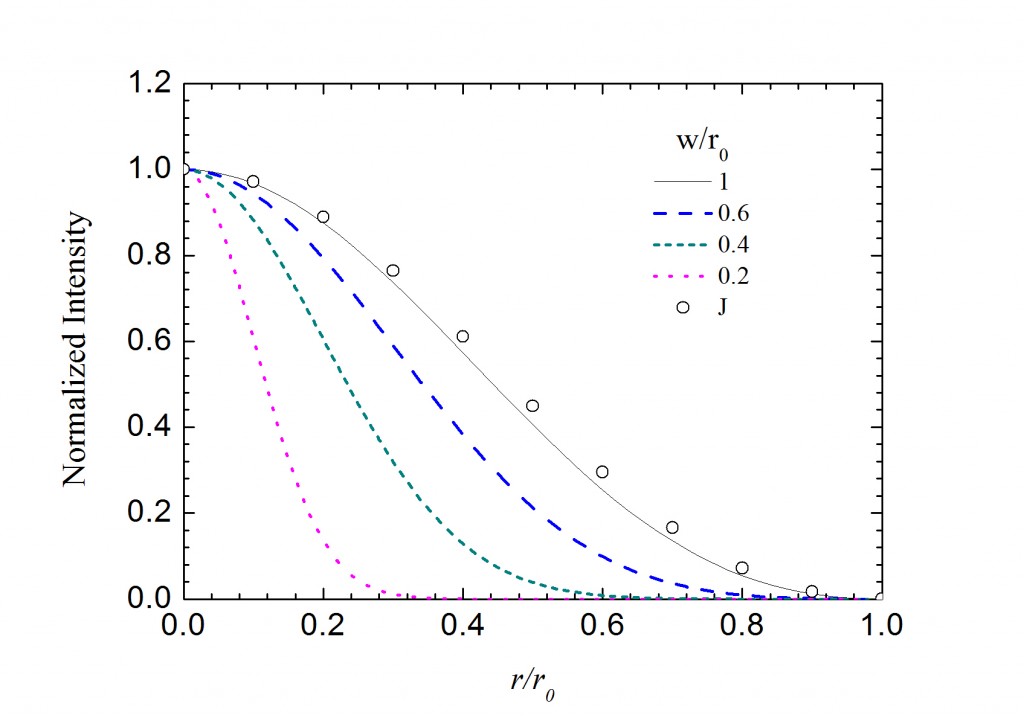 |
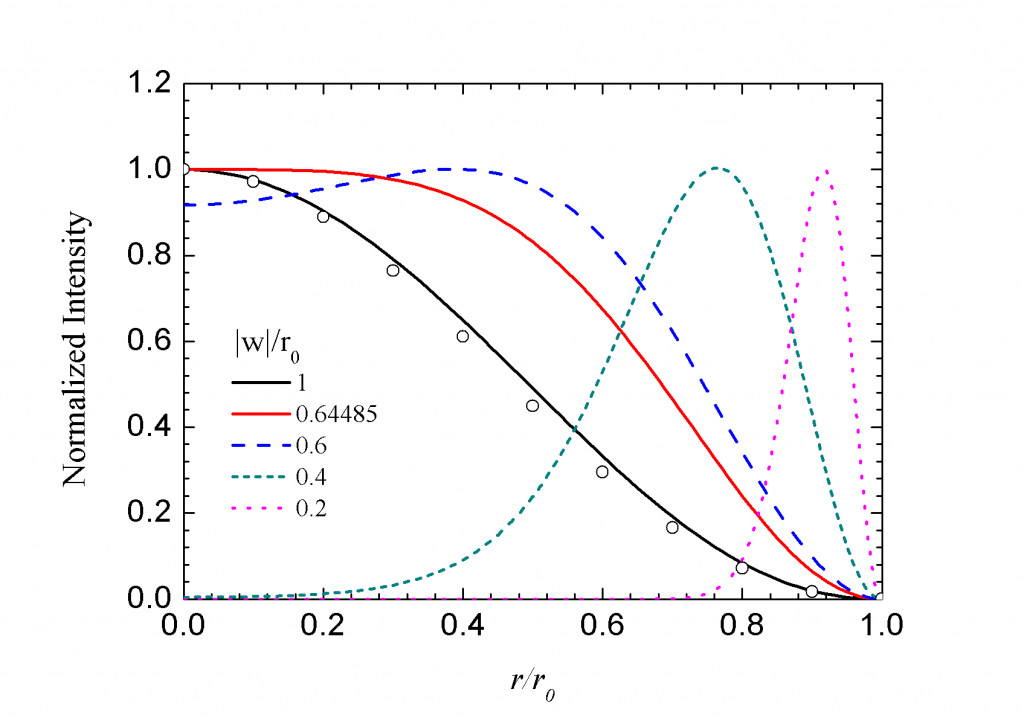 |
27. Yuanye Liu, Tsing-Hua Her, Adam Dittli, and Lee W. Casperson, “Continuous-wave hybrid index-antiguided and thermal-guided planar waveguide lasers,” Applied Physics Latters 103, 191103 (2013).
A continuous-wave index-antiguided planar waveguide laser with a 220-µm Nd:YAG active layer is investigated. Robust fundamental mode oscillation in the antiguided direction is demonstrated with negligible thermal index focusing while in the orthogonal direction the laser is dominantly thermally guided. A maximum output power of 2.25 W is obtained with a slope efficiency of 43% and an optical efficiency of 39%. A model is developed for finding the fundamental mode of laser oscillation with arbitrary index antiguiding and gain guiding in orthogonal directions with simultaneous thermal index guiding. Experimental results are compared to theory with good agreement.
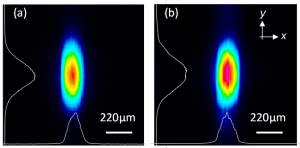 |
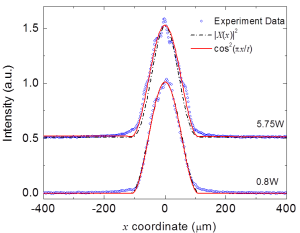 |
26. Lee W. Casperson and Tsing-Hua Her, “Thermal refraction focusing in very-large-core step-index antiguided fiber lasers,” Journal of the Optical Society of America B 30 (12), 3095-3101 (2013).
Thermal refraction focusing in very-large-core step-index antiguided fibers is investigated theoretically. An analytical model based on a zero-field approximation is presented for treating the combined effects of index-antiguiding and thermal focusing for both the linearly-polarized fundamental and first-high-order radial modes. At low pumping power the modes are antiguided by the amplifying core boundary whereas at high pumping power they narrow due to thermal focusing. The same analysis is also applicable for very-large-core graded-index fibers in which the fields are truncated at the boundary.
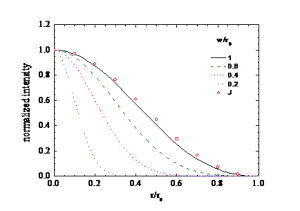 |
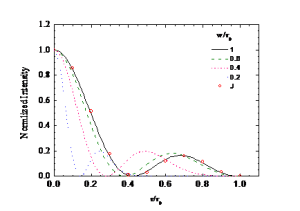 |
25. Lee W. Casperson, Adam Dittli, and Tsing-Hua Her, “Thermal refraction focusing in planar index-antiguided lasers,” Optics Letters 38 (6), 929-931 (2013).
Thermal refraction focusing in planar index-antiguided lasers is investigated both theoretically and experimentally. An analytical model based on zero-field approximation is presented for treating the combined effects of index-antiguiding and thermal focusing. At very low pumping power the mode is antiguided by the amplifier boundary whereas at high pumping power it narrows due to thermal focusing. Theoretical results are in reasonable agreement with experimental data.
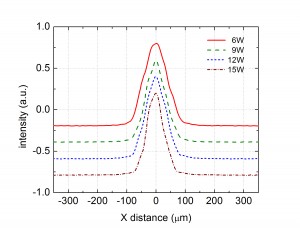 |
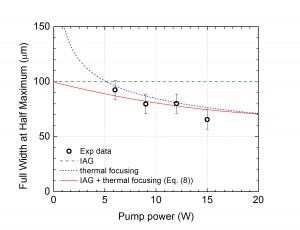 |
24. Chaofan Wang, Tsing-Hua Her, Lee Casperson, “Power characteristics of homogeneously broadened index-antiguided waveguide lasers,” Optics Letters 37 (5), 815-817 (2012).
A model is reported that describes a bi-directional homogeneously broadened IAG slab laser having arbitrary single-pass gain and distributed losses. Maximum extraction efficiency and corresponding optimum output coupling are determined for various values of unsaturated gain and loss per pass. A method is proposed to determine the intrinsic laser parameters from output power measurements.
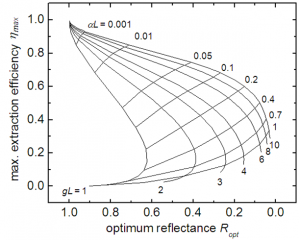 |
23. Chaofan Wang, Tsing-Hua Her, Lei Zhao, Xianyu Ao, Lee Casperson, Chih-Hsien Lai, Hung-Chun Chang, “Gain Saturation and Output Characteristics of Index-Antiguided Planar Waveguide Amplifiers with Homogeneous Broadening,” Journal of Lightwave Technology 29, p. 1958 (2011).
We investigate numerically and analytically the propagation characteristics of gain-guided modes in index-antiguided planar waveguides. We show that the gain-guided mode has modal confinement proportional to the modal gain, and single-transverse mode propagation is very robust in such waveguides. The power evolution of the fundamental mode can be described analytically with very good accuracy. Limiting power and optimum length of the waveguide amplifiers can also be obtained analytically.
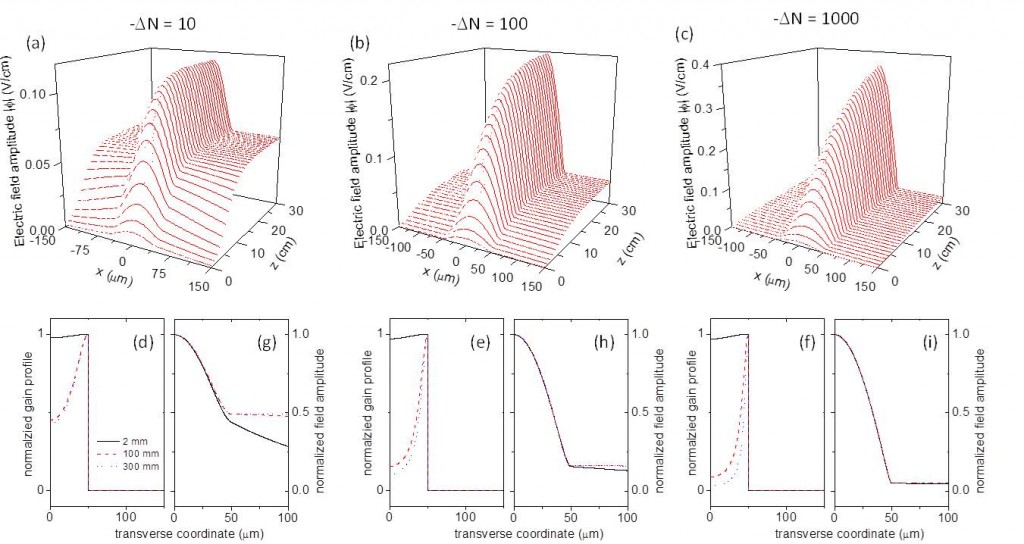 |
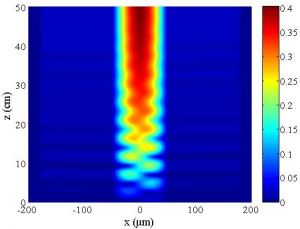 |
22. Haitao Zhang, Terry T. Xu, Mingzheng Tang, Tsing-Hua Her, and Shu-you Li, “Selective growth of tungsten oxide nanowires via a vapor-solid process,” J. Vacuum Science and Technology B 28 (2), pp. 310-315 (2010).
Selective growth of tungsten oxide nanowires has been achieved using a vapor-solid (VS) process without the assistance of any catalysts. To achieve selective growth, low vapor supersaturation was employed to suppress the spontaneous nucleation of tungsten oxide during the VS process, and patterned tungsten coating was introduced to provide seed nuclei, which promotes the growth of tungsten oxide nanowires and control their growth sites. Patterned tungsten oxide nanowire arrays have been fabricated using simple patterning methods, such as shadow mask and laser-induced nanograting growth. The effects of the source heating temperature and the growth temperature on the nanowire growth have been investigated, showing the morphology of tungsten oxide deposition was sensitive to the vapor supersaturation controlled by both temperatures.
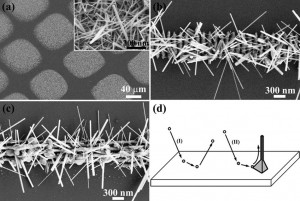 |
21. S. H. Aref, O. Frazão, P. Caldas, L. A. Ferreira, F. M. Araújo, J. L. Santos, H. Latifi, P. Foy, T. Hawkins, J. Ballato, T. Her, and F. Farahi, “Modal Interferometer Based on ARROW Fiber for Strain and Temperature Measurement,” Photonic Technology Letters 21(21) 1636-1638 (2009).
In this work, interferometric sensors based on antiresonance reflecting optical waveguide (ARROW) fibers were developed and used to sense strain and temperature. Two types of solid-core ARROW fibers were considered and signal demodulation was achieved using the white light interferometric technique. The ARROW fibers have two rings of high index rods arranged in a hexagonal structure with a lattice constant of ≈ 6 mm. The different sizes of the rods cause different measurand sensitivities for the two fibers. Resolutions of ± 1.1 με and ± 0.07 ºC were achieved for strain and temperature, respectively.
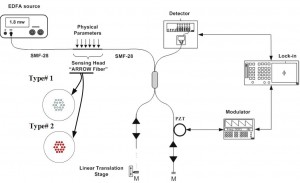 |
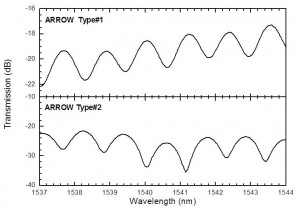 |
20. Xianyu Ao, Tsing-Hua Her, and Lee W. Casperson, “Gain guiding in large-core Bragg fibers,” Optics Express 17 (25) 22666-22672 (2009).
We theoretically analyze gain guiding in large-core Bragg fibers, to be used for large-mode-area laser amplifiers with single-transverse-mode operation. The signal is gain-guided in a low-index core, whereas the pump is guided by the photonic bandgap of the Bragg cladding to achieve good confinement. The high-index layers in the Bragg cladding are half-wave thick at the signal wavelength in order to eliminate Bragg reflection, reducing the Bragg fiber effectively to a step-index fiber for gain guiding.
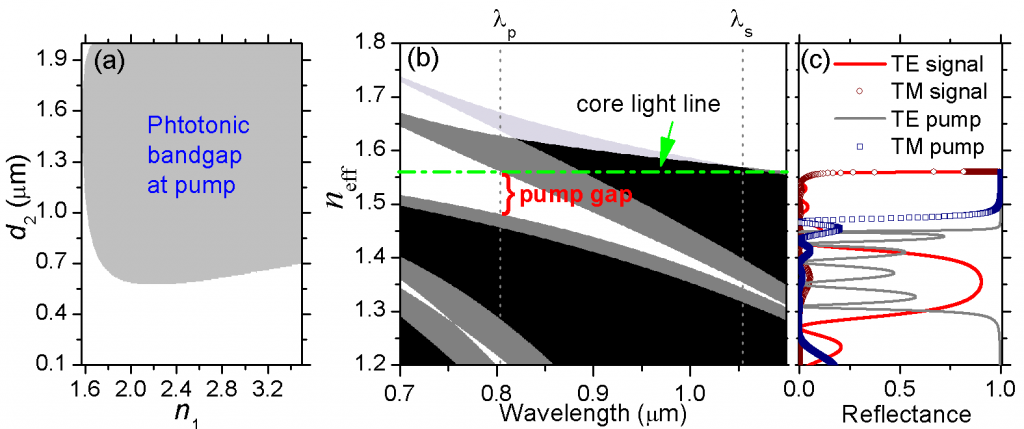 |
19. Tsing-Hua Her, Xianyu Ao, and Lee W. Casperson, “Gain saturation in gain-guided slab waveguides with large-index antiguiding,” Optics Letters 34 (16) 2411-2413 (2009).
We investigate numerically and analytically the effects of gain saturation on the propagation of the fundamental mode in a gain-guided index-antiguided slab waveguide. The propagating mode adapts to gain saturation by becoming less confined, while at the same time its peak intensity increases more slowly. At steady state, both the mode shape and power remain constant.
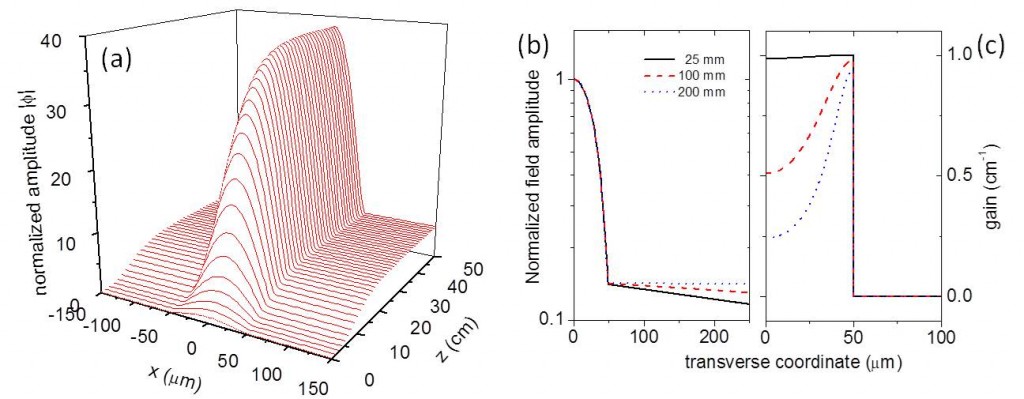 |
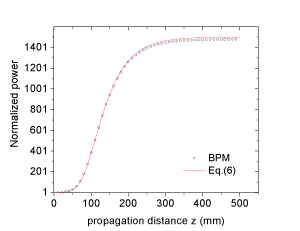 |
18. Tsinghua Her, “Gain-guiding in transverse grating waveguides for large modal area laser amplifiers,” Optics Express 16 (10) 7197-7202 (2008).
A new optically pumped waveguide amplifier with ultra-large mode area is proposed. This amplifier is based on gain guiding in a transverse grating waveguide in which the pump is confined by the photonic bandgap while the signal is guided by optical gain. Characteristics of the propagating modes of the waveguide amplifier are analyzed theoretically using the transfer matrix method, indicating robust single-transverse-mode operation with large modal gain.
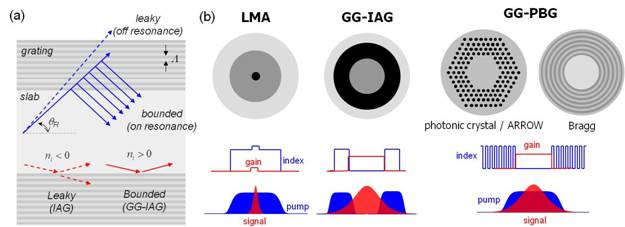 |
17. Mingzhen Tang, Haitao Zhang, and Tsing-Hua Her, “Self-assembly of tunable and highly-uniform tungsten nanogratings induced by femtosecond laser with nanojoule energy,” Nanotechnology 18 (2007) 485304 (5pp).
Tunable and highly-uniform tungsten nanogratings on sapphires are demonstrated by scanning 400-nm femtosecond-pulsed laser with pulse energy less than half of a nanojoule during laser-induced chemical vapor deposition. These gratings possess very good uniformity in both the grating period (standard deviation less than 1.5%) and the tooth length (less than 4%), and can be tuned by controlling the laser power and scanning speed. We show that nanograting can be easily fabricated on non-planar substrates such as glass optical fibers, and can be turned into larger-area one-dimensional grating by appropriate offset during multiple scans. A model based on local field enhancement and interference between the incident light and plasmon radiation is proposed to explain the anisotropic shape and the periodic appearance of the observed tungsten nanogratings.
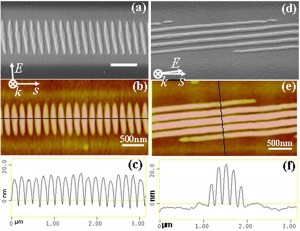 |
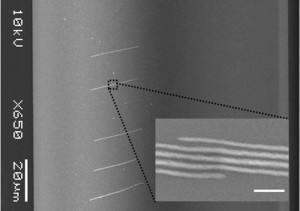 |
16. Mingxing Wang, Mingzhen Tang, Tsing-Hua Her, Wang Yueh, Kenneth E Gonsalves, “Synthesis, characterization and lithography performance of novel anionic photoacid generator bound polymer,” Journal of Photopolymer Science and Technology 20(6) 793-797 (2007).
15. H. Zhang, M. Tang, J. McCoy, and T. Her, “Deposition of tungsten nanogratings induced by a single femtosecond laser beam,” Optics Express 15 5937 (2007).
Tungsten nanogratings with sub-100 nm linewidths and subwavelength periods are fabricated by laser-induced chemical vapor deposition using a single 400 nm femtosecond pulsed laser beam without any beam shaping. Combining advantages of parallel and direct-write processing, this method can produce various nanograting structures on a wide range of substrates in a single step.
 |
14. Min Hyung Cho, Wei Cai, and Tsing-Hua Her, “Boundary Integral Equation Method for Photonic Crystal Fibers,” Journal of Scientific Computing, Pages 1 – 16, April 2006.
The Boundary Integral Equation for the eigenmode of the Photonic Crystal Fibers is formulated and numerically solved using the NystrÄom method. The real and imaginary part of propagation constant, which are related to the dispersion and the confinement loss, are obtained using a complex root searching method. This formulation is very flexible to handle the fiber geometry, and therefore could be applied to the photonic crystal fibers with novel refractive index profile and hole geometry.
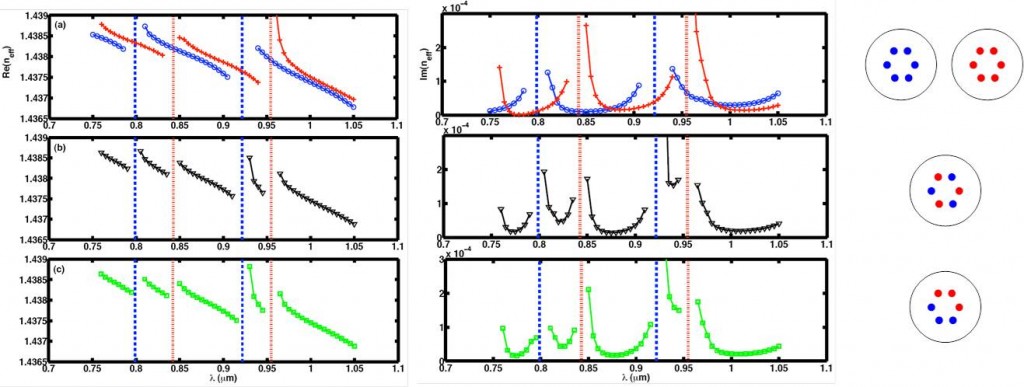 |